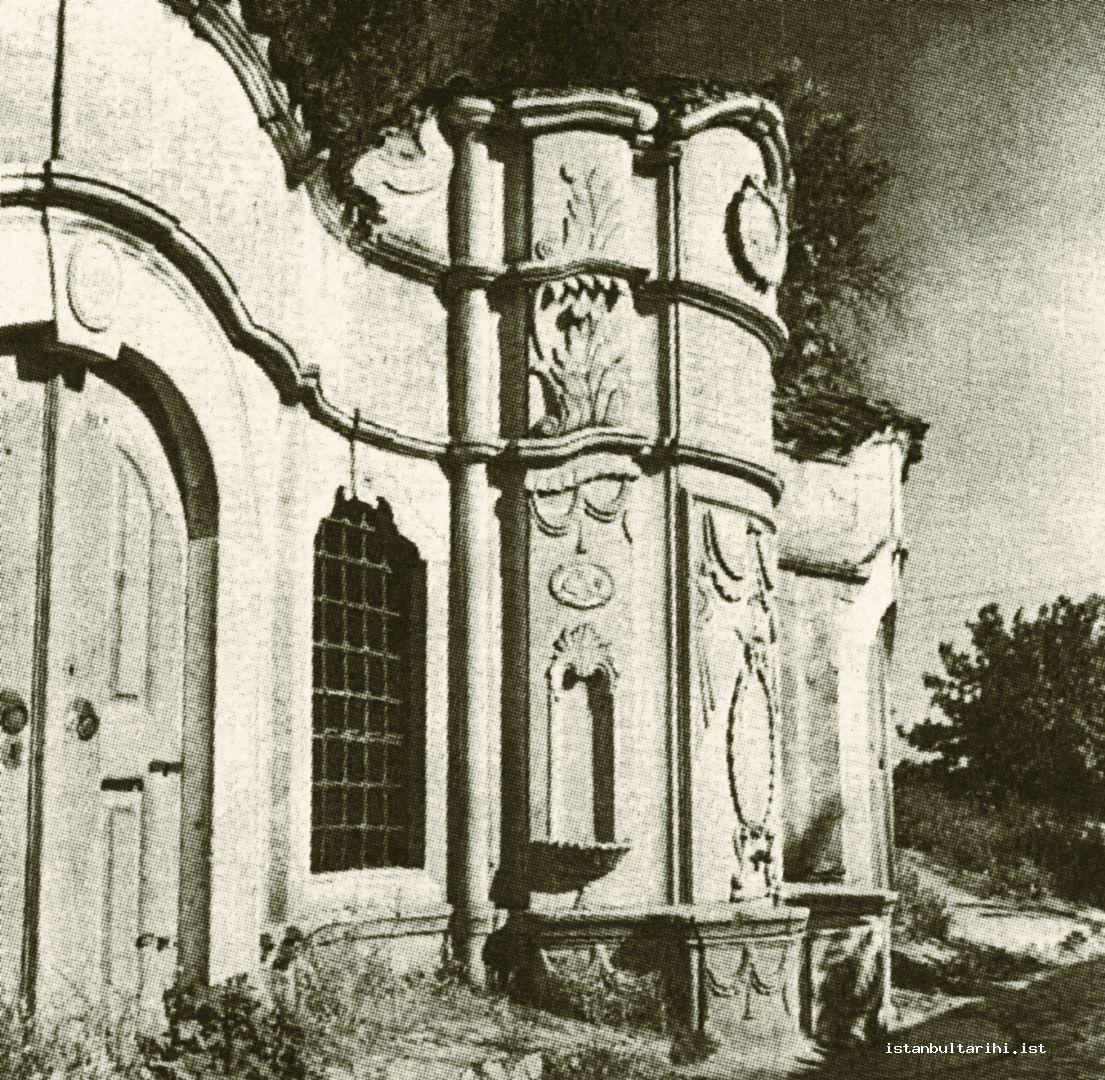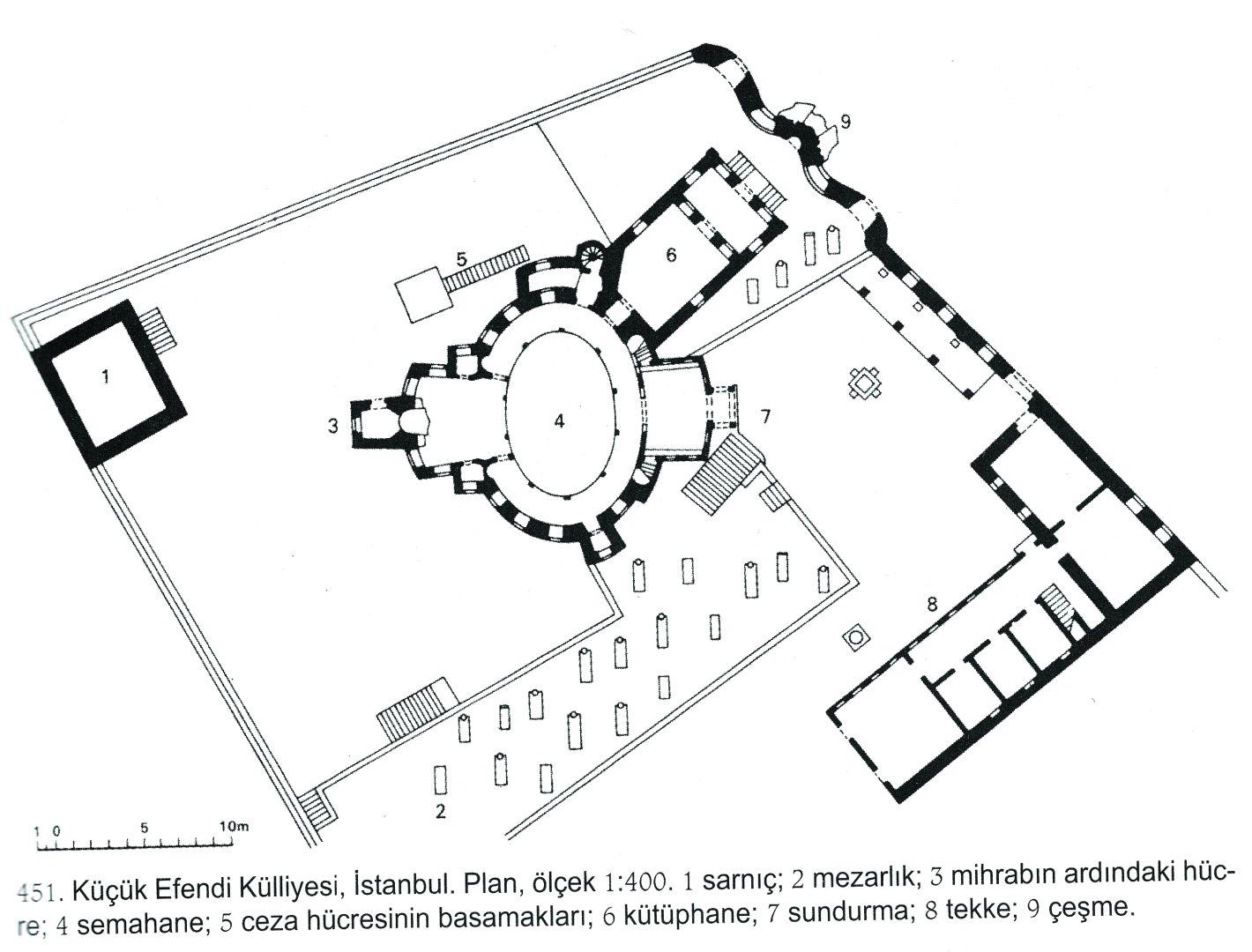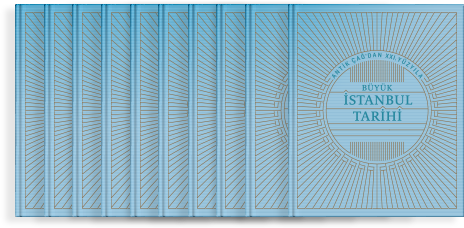Today, a series of partially knowable and unknowable, partially predictable and unpredictable causal chain of events enables us to define the post seventeenth-century world as modern. In respect of these aforementioned causal qualities, baroque1 has become almost synonymous with the concept of modernity over several decades.2 With this usage, baroque takes on a meaning beyond that of indicating the style with which architecture and art history is familiar.
While applying to all of the modern period, the eighteenth century and somewhat prior to that is an epoch that cannot be easily explained with modern, reason-based Cartesian clichés. This results both from not being able to speak yet of de facto clichés and also still having to come to terms with less familiar aspects of modern conditions and relationships. In this sense, as an approach that will help define the picture of that period, describing the eighteenth century with Ahmet Hamdi Tanpınar’s3 expression of “experiencing one another” or Arjun Appadurai’s4 notion of cannibalization5 captures the sense of encounter which enables us to remain distant from the process of the Westernization of thought that began in the nineteenth century, and allows us to reflect on other concepts that are intrinsic to recent modern times. Taking a retrospective look at the nineteenth century while considering the extent to which the beginning, which reflects the Ottoman essence, Westernization and modernization, can be taken back in time, is to examine the problem of modernity from a relatively large distance.

Expressions of encountering and experiencing one another are significant concepts for discussing the baroque. Encounters in the eighteenth century happened at a desk rather than in the battlefield. This was a time when methods of diplomatic relations, i.e., how those who encountered one another made an impression on each other, were developed. In a sense, theatricality is the best concept that encapsulates this century. While speaking the language of the other fluently with an allegorical technique formed the diplomatic aspect of the encounter, a mutual unmanaged exchange, formed during the circulation of beings and objects, would occur. While the mark left by that interaction was often negligible, it sometimes resulted in a “creative exchange.” Furthermore, both could also happen simultaneously. That which created the baroque world were primarily encounters that resulted in “creative exchanges” rather than meetings at routes that have been defined in such a way that no room is left for coincidence, followed by those who have been prepared in the language of the other.
In the eighteenth century, the world was ready for encounters that would have unexpected results and for the marks that these encounters would leave. Goods, languages, knowledge, admiration, technology and the activities of living creatures covered spaces. The belief that more geographically specific, scientifically abstract knowledge about the world as a whole could be attained caused events and lives to draw closer to each other, voluntarily or involuntarily, binding them together and making them interdependent.
Rather than controlled interactions, rapidly developing relations and connections among societies resemble nutritional processes that unpredictably spread or interact once they are active in the body, beyond the taste left on the tongue. Thinking over these unfathomable processes and making inferences is surely possible and essential. However, an increase in encounters was folded and layered in such a way that it could not result in the samenesses that is generated by those who make encounters in the normal way or through contrasts generated by disputes. In short, no knowledge was carried from the West to the East, nor from the North to the South, and it did not exist unvaried in the places to which it was carried. Therefore, baroque is neither information that can be taken and brought from France nor is it the persons or means that is able to transfer it. Baroque/modernity is the situation of producing and understanding this layered lack of structure.

Both the ease of documentation and the clarity of the classical language that brings the aspects together help in interpreting objects led to the reading of the relatively limited objects, such as, among others, the 18th-century consumer goods and pleasures, household wares, and furniture which were fairly limited according to their circulation route. However, revealing different relations is possible only at particular points where the objects or knowledge in circulation deviate from defined routes. In particular, when following these deviation points the way is illuminated for lifting the lid off exposure, imitation and Westernization; one goes beyond generalizations and reading particulars to see what makes a thing the kind of thing it is. Showing a similarity to cultural objects, and being involved in the motion of the world, living creatures give greater clues about different possible interpretations of encounters. The natural lives of living creatures provide these clues; these lives are sometimes replete with cultural debts, and sometimes separated from them. The traceable route6 of the tulip and the transformations it was exposed to are remarkable; this is a flower that traveled the globe at a relatively early date and which was transformed into a cultural object rather just being a flower that gave its name to an era.

The first official information about the arrival of the tulip to central Europe is its appearance in Vienna with other seeds and bulbs after being presented to the ambassador of the Habsburg Empire in 1554. In addition to the effort to cultivate new plants in the lands where they were newly encountered, the unpredictable diversification of the colors of the tulip, a result of alterations caused by viruses in new climates, created an original field for gardening and botany, initiating a process for transforming the tulip, like many plants, into a rehabilitated cultigen. In 1561, the first bulbs from Istanbul arrived in Antwerp. However, before the seventeenth century, the journey of the tulip began in the reverse direction; Ottoman growers no longer exported tulip bulbs from the Crimea, but from European sources; for example, the Lale-i Frengî (European tulip). There is no need to mention that the returning tulip was completely different from that which had left and that following this the evolution of the tulip continued ad infinitum.
The popularization of the tulip in the seventeenth century and subsequently cannot be dissociated from the changing contents of commercial interaction and the expanding space of exchange networks.7 Marketing was one of the leading strategies generated by these networks. Promoting a product’s diversification and adaptation that allows it to adjust to different markets is only one of these strategies. Although distinguishing the cause and effect is not easy, the tulip’s transcultural peculiarity persisted through breeding new hybrids in the varying cultural climates. The tulip, whose own substance had been hybridized, adopted a baroque character. Consequently, we need more than stylistic clichés or binary expressions to describe the styles and tastes of the period, given that intercultural information and the circulation of objects complicated the networks.
Historically, baroque was still considered to be a degenerate art style in the eighteenth century. Baroque-themed studies, rapidly increasing in number in Europe in the nineteenth century, were at the same time a rush to introduce a norm into baroque. Having been domesticated by this means, baroque became part of the dominating historical narrative. Compositions included in the catalogue of the baroque style, the formal lexicon of which became clearer in a manner that could be identified in the capital of the empire, gave reference for the first time to Ottoman Baroque, as a fulfillment of the modern historical means of narrative. The war against various factions, or the default frame that is not recognized as baroque, is essentially the sign of baroque. By reducing the baroque to a degraded Cartesian make-up that is similar throughout the world, it is transformed into an agreed-upon style. However, what makes using baroque as synonymous with modernity is precisely its purified, contradictory structure. That contradictory structure generates a system of values that is aesthetic, autonomous, symbolic and non-representative. Approaching such a system from within enables the spatial structure of the historically narrowed baroque to expand. Even if a case is described in which the place and time of encounter are unpredictable, baroque is the simultaneous nature of a world that is open for encounters. Thus, it is not possible to speak of ‘baroque natures’ revealing themselves in certain places or always in the same way. Each time it emerges hybridized, diversified. Baroque is the first modernity of the world with this characteristic. The formal lexicon that attempts to define baroque in an unchangeable way is, in fact, composed of a loose selection of form that is open to expansion from the very beginning. Baroque practice, with the flat form it spatially presents, destroys the perfect definition of baroque that is desired each time. As it can also be deduced from the word’s lexical meaning, the imperfect pearl, the existence of which can be mentioned only institutionally, is ultimately baroque. Baroque’s unique flexibility stems from this. At different Ottoman baroque dates, the one and only definition that can hold together baroque-assumed constructions/structures are states of “imperfection” that can be seen in them. That the open courtyard of the Büyük Yeni Han (Great New Han - 1764), which extends along 85 meters, and the elliptic sema hall of the Küçük Efendi Külliyesi (1825), the sinuous wall8 where its library entrances and fountain are located, indicates that what keeps these two constructions in the same category is not a common pattern of style.
In the same way that various folds are not enough to produce the baroque characteristic, the shared common “place” is not enough to create the common ground of this scene which constantly produces and brings together the unexpected. In this case, is it possible to speak of a baroque unique to Istanbul or to some other place? Istanbul constitutes one of the significant junctions of commercial and cultural networks across all time periods. While its relatively unshakable position in the network transforms it into the focus of envisaged encounters, at the same time both the possibility and frequency of encounters are enhanced, and thus so is creative exchange. Even if the unpredictable is looked at from the perspective of relatively closed encounters, deviations that block the circulation of information and objects, which in certain environments had a market in the eighteenth century, gained validity for the geography of Ottoman culture. In particular, the multi-polarity which disturbed the centralist structure, the internal functions of the institutions, despite having the same names historically, particularly in the eighteenth century, demonstrated great changes; the documentation of the classical period and the strong writing rules of the expression regime, as well as the regulatory, precautionary edicts and petitions of the nineteenth century, combined with the plurality of production, consumption and action in the eighteenth century seem to have been made possible by the aforementioned changes. Accordingly, when baroque is in question, neither encounters nor meetings make it possible for there to be a common ground which links cultural production, including space, to a metanarrative.
The lack of knowledge of how the relationship of the center remained intact or protected, how the information spread with central mediation over a range, but one of a temporary nature, or in other words, the isolation of information that seems to be impermeable in newly established places does not seem to be valid for the world of the eighteenth century. Consider the külliye of the grand vizier of the Tulip Era, Nevşehirli Damat İbrahim Pasha, which had been built in Nevşehir at the beginning of the century by the court architects and using the grand vizier’s force and wealth. Differing from the elaborate and classic expression, the Istanbul baroque sprang to life in Nevşehir; this seems to ignore possible relations, and the consideration of this külliye as a nucleus of Anatolian baroque to create correlations through location. However, even the appropriation of baroque in an unusual way in this construction is enough to give the concept a new perspective.
The stylistic definition of baroque functions as a precaution for differentiating the effect of cultural production, time and place. It is assumed that the definition remained as an unchanging core, despite changes in “time and place.” However, precisely due to this reason, it is necessary to speak of a discrepancy in the cultural product by only referring to the place both within the cultural context and by creating a differentiating factor through mediation solely as a result of imitation or contagion. Because this core has been acknowledged to have remained unchanged, it is believed to be a brilliance that cannot be dulled. When this apparently unchangeable factor was recognized, the opportunities of the baroque world revealed themselves through every cultural object.
FOOTNOTES
1 In this text, the concept of baroque will be used as the opposite of classic and as a synonym for the concept of modernity. Therefore, it will be written in lower case as long as it is not being used in a historical sense.
2 For synonymic or homonymic usage of the concepts of baroque and modernity see Gilles Deleuze, The Fold: Leibniz and the Baroque, tr. Tom Conley, London: Continuum, 2006; Gregg Lambert, The Return of the Baroque in Modern Culture, London: Continuum, 2004.
3 Ahmet Hamdi Tanpınar, XIX. Asır Türk Edebiyatı Tarihi, Istanbul: Çağlayan Kitabevi, 2003, p. 44.
4 Arjun Appadurai, Modernity at Large: Cultural Dimensions of Globalization, Minneapolis: University of Minnesota Press, 2005, p. 43.
5 Cannibalize: 1- (of an animal) eat (an animal of its own kind); 2- Use (a machine) as a source of spare parts for another, similar machine (Oxford Dictionary, Oxford-New York 1990).
6 Ariel Salzman, “The Age of Tulips: Confluence and Conflict in Early Modern Consumer Culture (1550-1730)”, Consumption Studies and the History of the Ottoman Empire 1550-1922, ed. Donald Quataert, New York: State University of New York Press, 2000, pp. 83-106.
7 Salzman, “The Age of Tulips”, p. 92.
8 The referred to constructions’ visuals have respectively been taken from the following sources: Julia Pardoe, Beauties of the Bosphorus, London: Pub. for the proprietors, by G. Virtue, 1839; Godfrey Goodwin, A History of Ottoman Architecture, London: Thames & Hudson, 1971.





